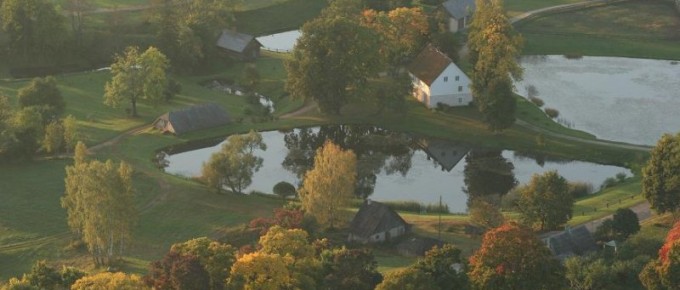
Fish farm
The bodies of water around Turaida include more than 40 ancient ponds, as well as remnants of dams. Ponds in the centre of the Turaida Estate have been listed in documents and shown on maps ever since the 16th century. The first ponds were installed in so-called “knighthood holes,” with water coming from local streams. “Knighthood holes” appeared when clay was dug to manufacture bricks for the castle. Remnants of the oldest known dams in the area show that they were installed at least 200 years ago.
Pond operations developed very rapidly at the Turaida Estate during the early 20th century. Many new ponds were dug, and a specialist from Denmark was brought in to introduce the latest methods in fish breeding.
After the agrarian reforms of the 1920s, the ponds became the property of the agronomist Emīls Zolmanis. The largest ponds were cleaned up, wooden equipment used to regulate water levels in the pond was replaced with cement water regulators. Several new ponds were dug. Most of the ponds housed carp, a few housed tench, and there were also decorative golden orfes, which are a type of the common ide.
The territory of the Turaida Museum Reserve currently has 26 known places where ponds existed long ago, and 17 of them actually have ponds.
